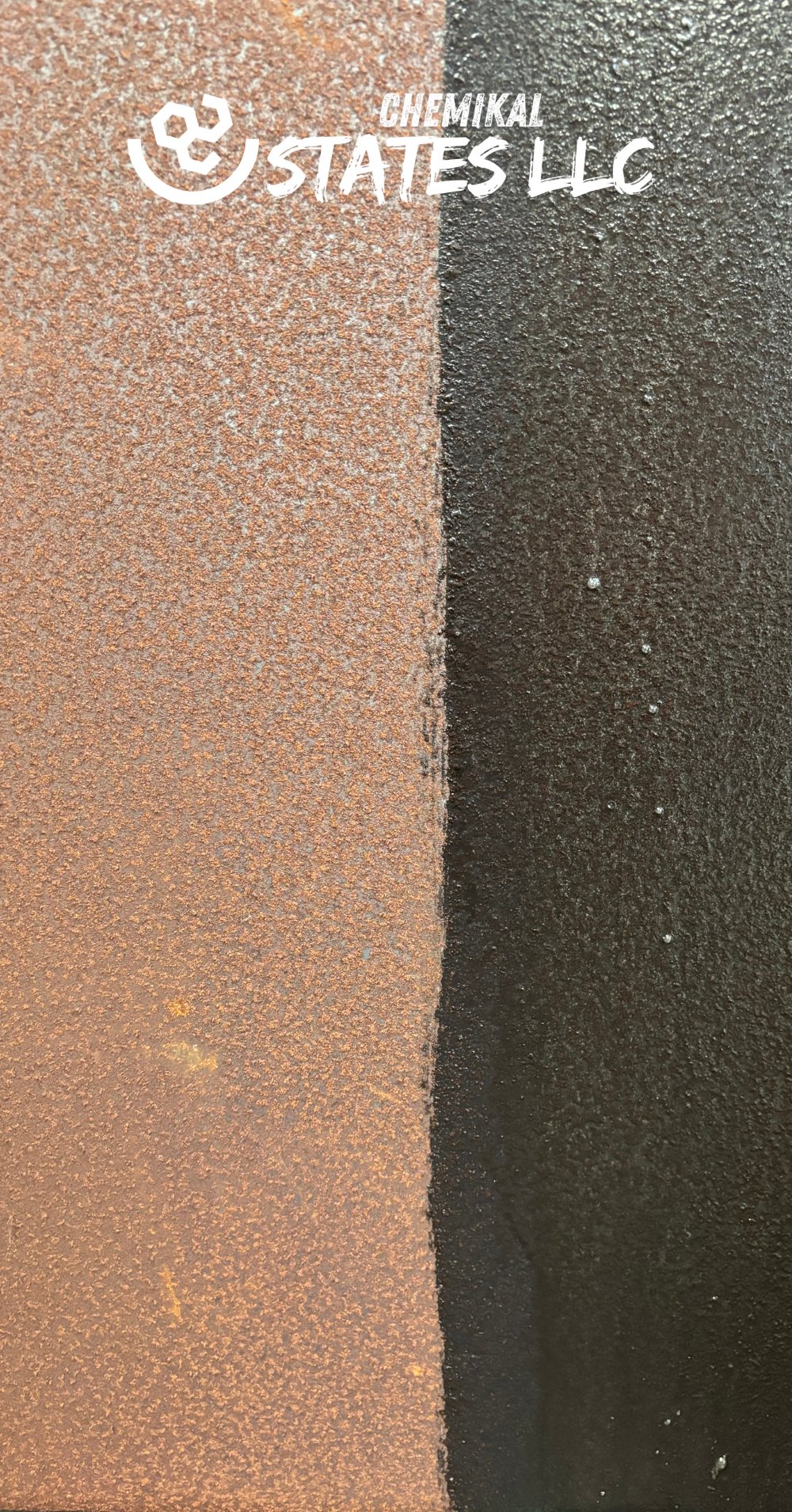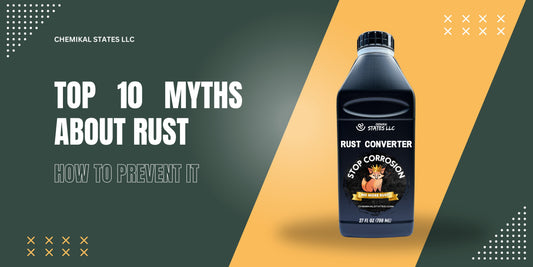
The Ultimate Guide to Rust Converter: Protect Your Metal and Stop Corrosion
Share
Metal corrosion is an issue that affects many industries and everyday life, from automotive maintenance to construction and industrial machinery. Whether you're looking to protect your car, machinery, or metal structures, understanding how to stop rust and corrosion is crucial. In this guide, we will explore how rust converters work, why they're essential, and how you can use them to prolong the life of your metal assets. We'll also introduce you to one of the best products on the market, the Chemikal States Rust Converter, and explain why it's the top choice for anyone serious about corrosion protection.
What is a Rust Converter?
A rust converter is a chemical solution that transforms rust (iron oxide) into a stable, protective layer. This process not only stops the rust from spreading but also primes the surface for painting or further treatment. Unlike rust removers, which scrape away rust, rust converters chemically alter the rust, making it an integral part of the protective layer.
How Does a Rust Converter Work?
Rust converters typically contain two active ingredients: tannic acid and an organic polymer. The tannic acid reacts with iron oxide to form ferric tannate, a stable, dark protective layer. The organic polymer then acts as a primer, sealing the surface and providing a base for additional coatings like paint.
-
Tannic Acid Reaction: Tannic acid converts rust into a more stable compound, ferric tannate, which is black and much less reactive than rust.
-
Polymer Coating: After the rust is converted, the organic polymer forms a protective layer that adheres to the metal, providing a base that is ready to be painted or coated with other protective materials.
Why Use a Rust Converter?
Using a rust converter is essential for several reasons:
-
Stops Rust in Its Tracks: Rust converters stop the oxidation process, preventing further damage to the metal.
-
Prepares the Surface: The treated surface is primed and ready for painting or coating, ensuring better adhesion and durability.
-
Saves Time and Effort: Instead of removing rust completely, which can be time-consuming and labor-intensive, rust converters simplify the process by transforming the rust in place.
-
Cost-Effective: By extending the life of metal objects and structures, rust converters reduce the need for costly repairs or replacements.
How to Use a Rust Converter
Using a rust converter is straightforward, but following these steps will ensure the best results:
-
Preparation: Clean the surface of any loose rust, dirt, and grease. This ensures that the rust converter can work effectively.
-
Application: Apply the rust converter directly to the rusted area using a brush, roller, or spray. Ensure even coverage.
-
Drying: Allow the rust converter to dry. This typically takes a few hours, but it’s best to leave it overnight for complete curing.
-
Painting: Once the rust converter has dried and cured, the surface is ready for painting. Apply a top coat to further protect the metal and enhance its appearance.
Introducing the Best Rust Converter: Chemikal States Rust Converter
When it comes to protecting metal from corrosion, the Chemikal States Rust Converter stands out as a top choice. Here's why:
-
Superior Rust Conversion: The Chemikal States Rust Converter effectively converts rust into a stable, protective layer, stopping corrosion in its tracks.
-
Easy Application: This product is designed for ease of use, with a simple application process that doesn’t require extensive preparation or special tools.
-
Long-Lasting Protection: Once applied, the Chemikal States Rust Converter provides long-term protection against further rusting, making it an excellent investment for any metal maintenance project.
-
Safe and Environmentally Friendly: The formula is safe for the user and the environment, containing no harmful chemicals that could pose a risk during application or disposal.
-
Versatility: Whether you're working on a car, tools, outdoor structures, or industrial equipment, the Chemikal States Rust Converter is versatile enough to handle any job.
How Chemikal States Rust Converter Can Help Your Projects
Whether you are a professional in the automotive or construction industry or a DIY enthusiast, using the Chemikal States Rust Converter can significantly improve your results. Here are some practical applications:
-
Automotive: Prevent rust on your car's body, frame, and undercarriage. The Chemikal States Rust Converter primes the surface, making it ready for painting and ensuring a longer-lasting finish.
-
Construction: Protect steel beams, rebar, and other structural elements from rust. This is particularly important in coastal or humid environments where corrosion is a significant risk.
-
Tools and Machinery: Extend the life of tools, equipment, and machinery by preventing rust from forming. The rust converter not only stops existing rust but also prepares the surface for protective coatings.
-
Outdoor Structures: Use on fences, gates, and other outdoor metal structures to prevent rust damage and maintain structural integrity.
Why Chemikal States Rust Converter is the Best Choice
With many rust converters available, it's essential to choose a product that offers proven results. The Chemikal States Rust Converter is trusted by professionals and DIY enthusiasts alike for its effectiveness, ease of use, and long-lasting protection. Its superior formula ensures that rust is not just masked but is converted into a protective layer, extending the life of your metal assets.
Conclusion: Don’t Let Rust Win
Rust is a relentless adversary, but with the right tools, you can protect your metal from its damaging effects. The Chemikal States Rust Converter is an essential part of any corrosion prevention strategy, offering a simple, effective, and cost-efficient way to stop rust in its tracks.
Whether you're maintaining a vehicle, protecting industrial equipment, or preserving outdoor structures, Chemikal States Rust Converter provides the protection you need to keep rust at bay. Don’t wait until it’s too late—invest in the best rust converter today and ensure that your metal stays strong, durable, and rust-free for years to come.
For more information and to purchase the Chemikal States Rust Converter, visit our product page.










